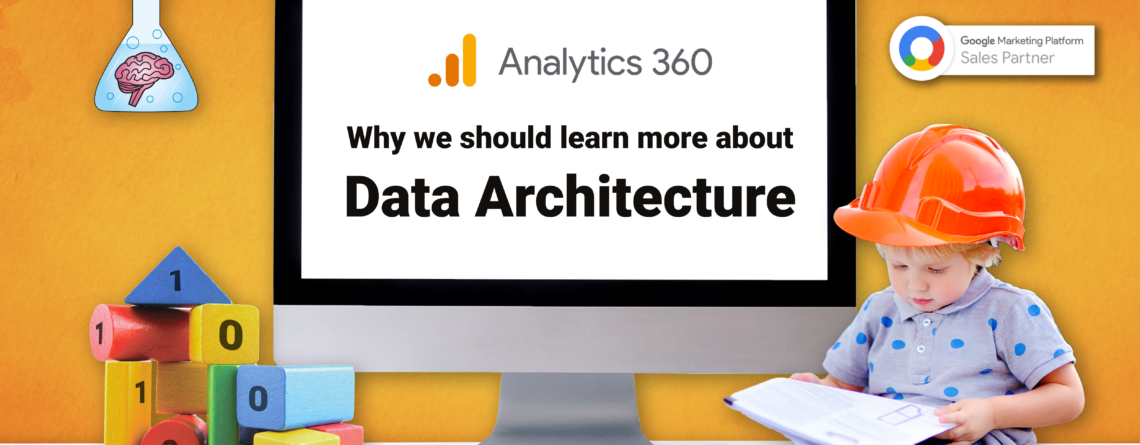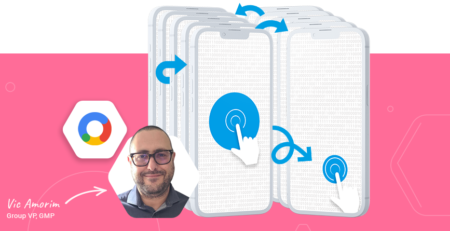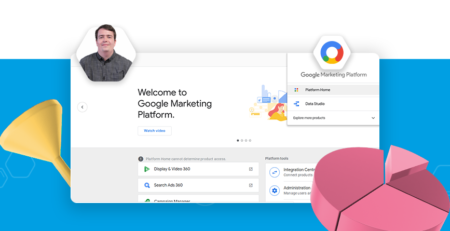How Analytics 360 can help build a best-in-class data set up
Google’s Analytics 360 is the enterprise version of Google Analytics, and is a core part of Google Marketing Platform. The standard Google Analytics is a great solution for most, but Analytics 360 has some game-changing features for businesses looking to develop enterprise-level analytics capabilities.
As a Google Marketing Platform Sales Partner, we understand the importance of a solid data architecture and strategy. You can do some pretty amazing things with Analytics 360, to leverage insights and drive digital performance, but a good set up is absolutely crucial.
Why you need a best-in-class data set up
By reporting on key metrics and trends, analytics allows you to measure historical digital performance, i.e. what has happened. But if your analytics tools are poorly configured, it may as well be worthless. A good data architecture ensures reliable and consistent measurement across your suite of data solutions. Clean, reliable data is the foundation of good analysis.
This then enables you to understand why things happened, by analysing performance and uncovering relationships in order to leverage insights.
Finally, advanced analysis lets you estimate future impact to quantify relationships and predict future events. You can use these insights to drive performance and test the impact of possible actions, such as targeting a specific audience, optimising to a different KPI, or testing personalised site design variants with CRO.
But if bad data is fed into a predictive model the results can be disastrous, leading to inaccurate modelling, ineffective campaign optimisations and poorly informed business decisions.
For this reason, you should always kick off analytics projects with a thorough account auditing process which runs through your tag management system, micro conversions, on-site revenue and product data tracking, and cross-channel tracking.
Let’s break down what you can do with a great Analytics 360 set up:
1. Reporting and insight
Analytics 360 is great for businesses doing a lot of cross-channel activity, e.g. running large search accounts and premium display, needing to gather data from multiple sources and then inform the strategy with it. It’s therefore great for both reporting and insight, which is all about demonstrating business value. Having automated, digestible, and relevant reports helps build data literacy within your business.
Unlike other options like Google Analytics or Adobe Analytics, Analytics 360 benefits from Google Marketing Platform’s integrations. Where Analytics 360 allows for reporting segmenting audiences based on performance, it can then send those back to Google Ads, Search Ads 360, and Display & Video 360 and align audience strategy for search and display, leveraging data for:
- Targeting similar audiences to high value existing customers
- Displaying remarketing to loyal customers when they’re most likely to convert based on measured purchase cycles
- Optimising search bidding to customers more likely to purchase high value products
- Excluding customers who will convert regardless of whether they have seen an ad
The real crux of reporting and insight, though, is to be able to take action off the back of the data you capture. Analytics 360 has a number of special features like Advanced Analysis, which is a tool that helps you gain a better understanding of your data with easily customisable reporting, and allows you to create segments from the insights and comparisons you make to apply them as audiences to your display and search activity.
One of the most exciting things about Analytics 360 is that Google BigQuery is readily available to handle billions of data points hosted in the Google Cloud platform, allowing you to really dig deep into your data and merge it with other data sources, such as a CRM, to analyse the typical behaviours of your highest performing customer segments.
2. Attribution
These insights can add huge value in boosting your marketing performance. The next step is to understand how different marketing channels and tactics are driving conversions for your business. This is where attribution comes in.
The attribution landscape has become increasingly complex, but one thing remains constant; you must look at more than the last interaction to truly understand your marketing performance and inform your strategy.
You also need to understand the impact of technological and regulatory changes such as GDPR and ITP, and the need to leverage your first-party data with single-stack solutions like Google Marketing Platform in a world of walled gardens.
The chart below shows what your long-term goal for attribution should be:
Analytics 360 has full cross-channel attribution capability. It enables you to measure what marketing works best across your websites by enabling the aggregating, analysis and activation of insights. Its advanced attribution modelling includes a data-driven model which uses an algorithm to understand where channels are making the most impact. This model will have the issue of undervaluing channels such as Facebook due to lacking view-through conversion data, so we recommend feeding results from in-channel incrementality testing back into your view of attribution, and comparing these results to any marketing mix modelling you may also be doing.
It’s great for getting a comprehensive view of your customers, such as which marketing touchpoints they interact with, how they use your site, how frequently they return, and what they purchase when they’re there.
All in all, Analytics 360’s access to granular and recent data, combined with integrations with Google Marketing Platform, BigQuery, and Salesforce, makes it very powerful for measuring attribution.
3. Predictive modelling and activation
Analytics isn’t just about understanding what has already happened. It can also enable you to see what’s likely to happen in the future.
With predictive modelling, you can:
- Improve forecasts
- Predict the quality of a cohort of leads
- Understand the impact of moving budget between channels
- Quantify the impact of external factors
With Google Cloud and BigQuery, you can do much more advanced, bespoke analysis, taking Analytics 360 data and your own customer data to do lifetime value modelling and segment customers based on loyalty. You can use out-of-the-box machine learning models to analyse consolidated data, and easily connect the modelled data to data visualisation platforms like Data Studio, which has native integrations with BigQuery and supports multiple third party data sources.
Then, you can feed the insights from your predictive models back into Google Ads, Search Ads 360 and Display & Video 360. You could optimise campaigns based on the predicted value of new customers, creating customised marketing campaigns aimed at high value audiences and increasing purchase frequency by remarketing to audiences. You could deliver ultra-personalised messaging and adjust bidding depending on likelihood of driving lifetime value. The sky’s the limit with insight activation!
To find out more about how Analytics 360 can help you get the most out of your marketing, get in touch with us!




